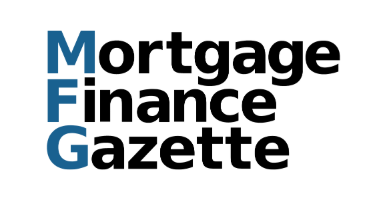The stamp duty holiday meant £171.69m more bridging loans were transacted in 2021 compared with 2020.
A total of £626.7m bridging finance was approved by Bridging Trends contributors in 2021, a 38 per cent increase on the previous year when it totalled £455m.
Bridging Trends is a quarterly publication which tracks bridging loan completions from several UK specialist bridging finance packagers including Adapt Finance, Brightstar Financial, Capital B, Clever Lending, Complete FS, Enness Global, Finanta, Impact Specialist Finance, LDNfinance, Optimum Commercial, Sirius Group, and UK Property Finance.
In 2021, lending surged during the third quarter, at £190.24m, as buyers attempted to take advantage of the stamp duty holiday before it ended.
Regulated bridging loans accounted for an average of 40.8 per cent of all contributor transactions during the 12 months.
Demand for regulated bridging was highest in the first half of the year, accounting for 47.7 per cent during the first quarter and 41.6 per cent the second quarter as homeowners rushed to complete before the end of the stamp duty holiday at the end of June, before falling to 37.7 per cent in Q3 and 36 per cent in Q4.
Second charge bridging loans accounted for 15 per cent of total contributor transactions in 2021, down from 23 per cent in 2020. This is the lowest annual figure recorded for second charge bridging loans since Bridging Trends launched in 2015.
The average monthly interest rate in 2021 fell to 0.76 per cent from 0.79 per cent in 2020 and the average loan to value level hit a record high in 2021 at 56.9 per cent, up from 50.7 per cent in 2020, 52.9 per cent in 2019, and 54.6 per cent during 2018.
Funding an investment purchase was the most popular reason for borrowers using a bridging loan in 2021. This accounted for 25 per cent of all contributor completions, up from 22 per cent in 2020.
Funding a chain-break was the second most popular use at 18 per cent of all lending, up from 17 per cent in the previous year. The data highlights how bridging finance continues to be an attractive proposition to buyers looking to save their delayed property purchases.
The average loan term was 12 months, while the average completion time on a bridging loan increased to 52 days, up from 50 days in 2020.
Dale Jannels, managing director at Impact Specialist Finance said the full effects of the stamp duty holiday appear “loud and clear”.
He said: “It feels like a watershed moment for the bridging finance market. With it still being a sellers’ market in many parts of the UK, I expect regulated bridging to continue to be popular throughout 2022 and this is being mirrored in our business currently.”
Joshua Elash, founding director at MT Finance said: “In 2022 we expect gross lending figures to fully recover and surpass the 2019 gross figures as more and more investors return to the market with a view to taking early advantage of the anticipated impact inflationary pressures will have on asset prices. Indeed, we note that ‘investment purchase’ is again the single largest demand driver for bridging finance.”
Chris Oatway, director, LDNfinance said bridging finance had been a lifeline to those experiencing lengthy solicitor delays. “It’s not surprising we’re seeing that ‘funding a chain-break’ was a popular reason for bridging finance. Based on the enquiry volumes we received in January, we anticipate a good year ahead.”
Chris Whitney, head of specialist lending, Enness Global said the continued decline in second charge loans was slightly surprising. “However, we have lost some lenders in this sector, and no one really seems to have filled the gap. I think there is definitely room for some product and criteria innovation here.”
Matthew Corker, operations director, Knowledge Bank said maximum LTV continued to dominate the most searched terms.
“[This is] suggesting that brokers are trying to make the most of their budgets and borrowing the maximum they can. Regulated bridging again featured in our top three. With buyers vastly outnumbering sellers in the residential property market, it appears more common than ever for perspective home movers to use bridging loans to purchase an onward property before theirs has sold.
“Completing our list for the quarter was ‘minimum loan amount’. Interestingly, we’ve seen an increasing number of borrowers look to bridging finance to make minor improvements to properties, in contrast to the beginning of the 2021, where this search term rarely featured.”




